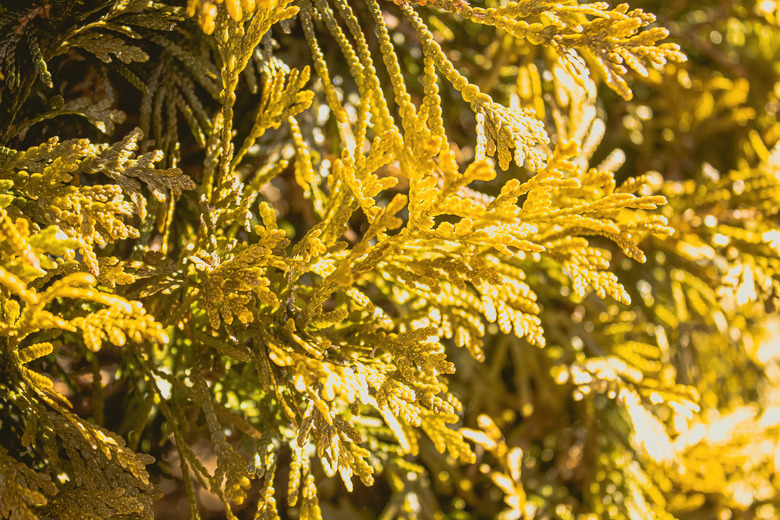The Evergreen Shrubs Are Turning Yellow
We may receive a commission on purchases made from links.
Deciduous plants drop their foliage before winter. Evergreen shrubs don't have the same cycle and retain most of their leaves to liven up the landscape all year round. When your evergreen foliage turns yellow, it may indicate too much sun or cold. On the other hand, it may be a simple matter of aging.
Why Evergreen Needles/Leaves Fall
Why Evergreen Needles/Leaves Fall
Anyone raised with the belief that evergreens stay green forever may wonder whether it is truly normal for their favorite tree's needles or leaves to yellow and drop. But if you consider the purpose of the evergreen leaves, it all makes sense.
Evergreen leaves, like deciduous leaves, have two primary functions: turning sunshine into energy and storing that energy. Younger leaves do this better than older ones that may be damaged by sunlight, wind, weather, or pests. The tree lets them die so it can replace them with more-efficient, younger leaves.
How can you tell if the yellowing results from the normal aging process or indicates a bigger problem? If all of the yellowing foliage is within the plant, these are likely older leaves falling. New shoots appear on the outside foliage.
Evergreens Lose Their Foliage Too
Evergreens Lose Their Foliage Too
It is a little too simplistic to think that "evergreen," when referring to a tree or shrub, means that the leaves or needles will start green and stay green forever. This is a myth. Both broadleaf evergreens (think holly or magnolia) and needled evergreens (pine, spruce, and fir) normally shed their older leaves. For evergreen needles, this is called needle cast.
Different species drop old foliage at different times. Pines and azaleas lose older leaves in autumn, while spring is the moment for magnolias and hollies to shed. And just like deciduous foliage, evergreen foliage changes from green to yellow, red, or brown before it falls. This can appear dramatic if there has been a lot of tree growth during the prior season, but, after the leaves yellow and fall, the tree looks (and is) perfectly healthy.
Evergreens React to Weather
Evergreens React to Weather
Too much sun or cold can also cause evergreen foliage to yellow or fall. This cannot be ruled out in these days of climate change.
Too little sun can result in sun scald. The clue to look for is whether needles on only one side of the tree are yellowing while the other side appears normal. Sunscald occurs when the leaves get "baked" by exceptionally dry winter air combined with low soil moisture and intense sun. The areas with most damage will be on the most exposed parts of the tree, with the tip of the needle most likely to discolor. Good winter watering can limit sunscald damage.
If your evergreens started yellowing soon after a deep freeze, the weather may well be the culprit. Evergreen freeze damage usually occurs when extended periods of warm weather are followed by rapid temperature drops. The evergreens just don't have time to go through the physiological changes that help them survive the cold. Freeze damage will show up on the outer parts of the branches. Don't rush to prune; wait until spring and see how it does. Your best defense against evergreen freeze is giving the plants a deep watering every two weeks throughout the winter.
